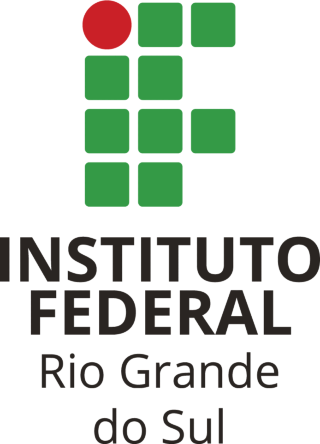Produtos a base de protioconazol no controle de doenças e seus efeitos sobre a cultura da soja
| Title: | Produtos a base de protioconazol no controle de doenças e seus efeitos sobre a cultura da soja |
| Author: | Terhorst, Tainá Kummer |
| Abstract: |
A soja (Glycine max) é a principal aleuroleaginosa cultivada no mundo, sendo utilizada para diversos fins como alimentação humana, animal e biocombustível. Nesta cultura, é imprescindível a aplicação de fungicidas antes do fechamento da entrelinha, mantendo a sanidade da cultura e visando maiores tetos produtivos. Diante do exposto, esse trabalho busca avaliar a eficiência dos produtos à base do princípio ativo protioconazol, para o controle de septoriose, crestamento bacteriano, ferrugem e cercosporiose no manejo fitossanitário da soja. Foram realizados dois anos de experimentos a campo no município de Selbach/RS, em delineamento de blocos casualizados, com treze tratamentos e quatro repetições, utilizando o cultivar Brasmax Zeus, com grupo de maturação fisioçógica 5.5. Os tratamentos utilizados são compostos dos ingredientes ativos isolados ou em misturas, conforme segue: 1- Testemunha; 2- Bixafem + Protioconazol + Trifloxistrobina; 3- Impirfluxam + Protioconazol; 4- Benzovindiflupir + Protioconazol; 5-Picoxistrobina + Protioconazol; 6- Fluxapiroxade + Protioconazol; 7- Protioconazol + Mancozebe; 8- Azoxistrobina + Mancozebe + Protioconazol; 9- Bixafem + Protioconazol + Trifloxistrobina + Mancozebe; 10- Impirfluxam + Protioconazol + Mancozebe; 11- Benzovindiflupir + Protioconazol + Mancozebe; 12- Picoxistrobina + Protioconazol + Mancozebe; 13- Fluxapiroxade + Protioconazol + Mancozebe. Utilizou-se escalas para determinar a severidade de doenças e a fitotoxicidade causada pelos produtos utilizados. O primeiro ensaio ocorreu no período de 22/11/2022 a 08/04/2023, cujo ano foi atípico, ocorrendo baixo índice de precipitação pluviométrica, provocando pouca incidência de doença e menor produtividade. E o segundo ensaio ocorreu no período de 24/11/2023 a 02/04/2024, ano em que ocorreu alto índice de precipitação, resultando em aumento progressivo de doenças, na qual destaca-se a ferrugem asiática (Phakopsora pachyrhizi), e mesmo assim resultou-se em aumento da produtividade. Desse modo, no primeiro ensaio, após a colheita e tabulação dos dados, pode-se concluir que não houve diferença significativa entre os tratamentos em relação a produtividade, por ter sido um ano com déficit hídrico e não ter alta manifestação de doenças. Já no segundo ensaio, após a colheita e tabulação dos dados, verificou-se diferença significativa entre os tratamentos, quando comparado a testemunha, além de verificar aumento significativo das doenças em relação ao ano anterior. Soybean (Glycine max) is the main aleuropean crop cultivated in the world, being used for various purposes such as human and animal food and biofuel. In this crop, it is essential to apply fungicides before closing the row, for better protection against disease attacks and aiming for higher production ceilings. In view of exports, this work seeks to evaluate the efficiency os products based on the active ingredient prothioconazole, for the control of septoria, bacterial blight, rust and cercosporiosis in the phytosanitary management of soybeans. To this end, two years of field experiments were carried out at Selbach/RS, in a randomized block design, with thirteen treatments and four replications, using the Brasmax Zeus cultivar, with cycle 5.6. The treatments were composed of the following chemical fungicides 1 – Test., 2- Fox Xpro, 3- Fox Supra, 4- Mitrion, 5- Viovan, 6- Blavity, 7- Armero, 8- Evolution, 9- Fox Xpro + Unizeb Gold, 10- Fox Supra + Unizeb Gold, 11- Mitrion + Unizeb Gold, 12- Viovan + Unizeb Gold; 13- Blavity + Unizeb Gold; Scales were used to determine the severity of diseases and phytotoxicity. The first test took place from 22/11/2022 to 08/04/2023, the year was atypical, with a low level of rainfall, causing a low incidence of disease and lower productivity. And the second test took place from 24/11/2023 to 02/04/2024, this year there was a high level os precipitation, resulting in a progressive increase in diseases, in which Asian rust (Phakopsora pachyrhizi), stands out, and even this resulted in incresed productivity. Therefore, in the first trial, after collecting and tabulating the data, can be concluded that there wasn’t significant difference between the treatments in relation to productivity, this was like a year with water déficit and there wasn’t high manifestation of diseases. In the second trial, after collecting and tabulating the data, there was a significant difference between the treatments, when compared to the control, in addition to a significant increase in diseases in relation to the previous year. |
| URI: | https://dspace.ifrs.edu.br/xmlui/handle/123456789/1726 |
| Date: | 2024 |
Files in this item
| Files | Size | Format | View | Description |
|---|---|---|---|---|
| 1234567891726.pdf | 3.042Mb |
View/ |
Texto completo |



